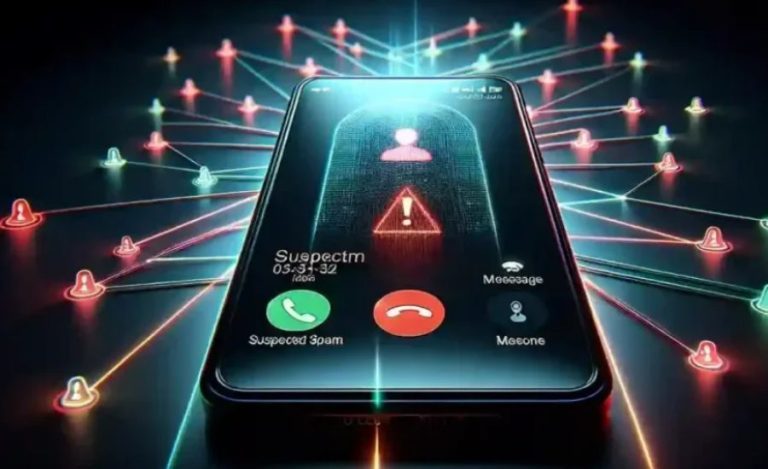315-32-5526, Introduction, Recognizing, Technology, & Many More
Introduction
Many of us have grown all too familiar with the number 315-32-5526, which frequently rings with the expectation of a message or offer only to bring annoyance. Everyone has experienced the annoyance of picking upthe phone only to hear a pre-recorded message or a robotic voice. The frequency of these robocalls has increased, becoming a major nuisance that has changed how we use our phones and handle incoming calls.
The topic of robocalls will be examined in greater detail in this article, with a focus on the infamous 315-32-5526. Here, we will explain what robocalls are and how they work so you can spot the warning signs. We will also talk about how they affect both people and companies. Furthermore, we will look at the laws governing robocalls and provide you practical tips on how to guard against these unwanted disruptions. You will be more equipped to deal with the difficulties presented by the 315-32-5526 calls and other robocall techniques at the end of this conversation.
What are Robocalls?

The number 315-32-5526 is only one example of the numerous numbers that highlight the pervasive problem of robocalls in our modern society. These automated calls use advanced computerized systems to quickly dial hundreds of numbers in succession, delivering pre-recorded messages to many receivers at once. Even though they can be a very effective form of communication, those who are receiving them frequently become frustrated.
Robocalls: What Are They?
There are several different types of robocalls, each with a distinct target audience and goal. Many robocalls are connected to scams or unsolicited solicitations, although some have valid purposes, like reminding people of appointments or informing them of flight cancellations. The National Consumer Law Center reports that Americans receive over 50 billion scam robocalls annually, or over 33 million fraud robocalls every day.
Typical robocall kinds include the following:
Calls for debt collection
Phishing schemes
Alerts about Medicare and healthcare
Messages from political campaigns
Appealing to charities
Offers for auto warranties
Loan frauds
Scams involving tech support
How Are Robocalls Operational?
Robocalls, such as those from 315-32-5526, use cutting-edge technology to effectively reach big audiences. This is a brief explanation of how they operate:
Getting Numbers: Robocallers gather phone number lists from a variety of sources, such as databases that they have purchased or public records.
Autodialing: To increase their reach, they use automated devices to rapidly dial a large number of numbers.
Message Delivery: A pre-recorded message that is frequently edited to sound as though it is being delivered by a real person plays when a phone connects.
Call Transfer: Recipients may be moved to a live operator for additional communication if they respond to the message.
Robocallers frequently use dishonest tactics, such as caller ID spoofing, to increase the likelihood that recipients would answer. By changing the caller ID information to make it appear as though the call is from a known or reliable number, this tactic encourages many people to answer calls they might have otherwise rejected.
Typical Robocall Frauds
Numerous robocalls are intended to trick and mislead unwary people, but some are genuine. Here are a few common scams to be aware of:
IRS scams: Con artists pose as IRS employees and demand immediate payment from the victim, claiming they owe taxes.
Scams using Social Security: Con artists may claim that there is a problem with the recipient’s number and demand immediate action to prevent suspension.
Tech Support Scams: Scammers posing as tech support agents call victims, claim that their computer is infected with a virus, and offer to fix it for a charge.
Travel scams: These calls usually offer free or significantly reduced holidays, and they frequently ask for credit card information in order to “hold” the deal.
Loan scams: Con artists provide alluring loans with alluring conditions with the goal of obtaining upfront payments or personal and financial data.
Chinese Robocalls: These calls, which target people who speak Chinese, may threaten deportation or legal issues in an attempt to obtain money or private information.
These scams have a significant impact. According to a 2022 Time Magazine article, scam callers caused over $29 billion in losses for around 68 million Americans. The strategies used by these con artists are always changing along with technology, which emphasizes how crucial it is to remain aware of potential dangers and alert.
Recognizing and Avoiding Robocall Scams: The Case of 315-32-5526

Many calls from 315-32-5526 may appear to be legitimate, however a sizable portion are intended to trick and mislead gullible people. It is critical to understand the typical robocall scams that could jeopardize your personal data and finances:
IRS Impersonation Scams: In these scams, scammers pretend to be IRS employees and tell the victim that they have unpaid taxes and threaten to take legal action if they do not pay right away.
Social Security Scams: Con artists may contact you to claim that there is an issue with your Social Security number and threaten to suspend it unless you take immediate action.
Tech Support Scams: Callers posing as tech support agents may claim that your computer is infected with a virus and offer pricey repair services to resolve the purported problem.
Travel scams: These calls frequently offer free or significantly reduced holidays, but in order to “reserve” the deal, they usually ask for your credit card information.
Loan scams: Scammers lure victims with promises of quick loans with attractive terms, primarily to obtain upfront payments or private information
Targeted Calls: Some robocalls target Chinese-speaking people in particular, threatening them with deportation or legal issues in order to obtain personal information or money.
These schemes can have serious repercussions. Studies from 2022 show that more than 68 million Americans were defrauded by these schemes, with losses totaling more than $29 billion. The strategies used by these scammers also change with technology, therefore it is critical to stay alert and mindful of the possible dangers.
Identifying Robocalls
Many phone users now find robocalls to be a major inconvenience, as they frequently interrupt our regular routines with unsolicited, automated messages. 315-32-5526 is an example of such a number. Protecting yourself from frauds and unsolicited solicitations can be achieved by learning to recognize these calls. Here are several essential indicators and methods for successfully identifying robocalls.
Important Symptoms of a Robocall
The existence of a pre-recorded message is one of the most evident signs that someone is making a robocall. An automated caller is clearly identified when you answer the phone and hear a robotic voice giving a pre-programmed message. Furthermore, the system may be connecting to the pre-recorded message, which is a regular occurrence in robocalls, if there is a discernible pause after you say “hello” before the message starts.
Robocalls typically employ high-pressure tactics to compel you to respond without thinking. For example, they may warn you of an urgent issue with your account or that you have won a reward. Phrases like “You have been specifically selected for this offer” and “You must decide right away” are routinely used in these calls, and the Federal Trade Commission (FTC) advises against them.
Recognizing Caller Trends
In order to improve the likelihood that you would answer the call, robocallers commonly employ strategies like “neighbor spoofing,” which involves imitating local area codes. If your number begins with 585, for instance, you may get calls from numbers that start with the same digits, giving the impression that you are familiar.
It is important to realize that blocking particular numbers, such as 315-32-5526, frequently does not work. It can be challenging to prevent all robocallers because they often alter their phone numbers. Numerous customers report getting calls from various numbers quickly, often within minutes of one another.
Making Use of Call Blocking Apps
Many consumers use call-blocking programs to counter the deluge of robocalls. These apps employ a number of strategies to detect and stop possible robocalls before they get to your phone. Among the well-liked choices are:
A free program called AT&T Call Protect provides automated fraud blocking and alerts users to alleged spam calls.
Hiya Caller ID and Block: This program allows you to add undesired numbers to a blacklist and offers automatic spam detection.
RoboKiller: This app analyzes calls and prevents known spammers using AI-powered audio fingerprinting. It claims to remove up to 99% of spam calls in a week.
Truecaller: This software lets users identify unwanted calls and reports spam using a database of over 7 million numbers.
To weed out possible robocalls, these apps use databases of known spam numbers, user reports, and sophisticated algorithms. Some even include services like the option to submit complaints with the FTC directly and reverse phone lookup.
Even though these methods can drastically cut down on unsolicited calls, it is still important to remain vigilant. Since robocallers are always changing their tactics, there is no foolproof answer.
The Technology Behind Robocalls: Dissecting the Process of 315-32-5526
Robocalls, such as the one from 315-32-5526, effectively reach a large audience by utilizing cutting-edge technology. There are typically multiple steps in the process:
Obtaining Phone Numbers: In order to construct their target audience, robocallers collect phone numbers from a variety of sources, such as publicly accessible databases or paid lists.
Automated Dialing: They are able to quickly phone thousands of numbers thanks to advanced autodialing technologies.
Message Delivery: A pre-recorded message is played upon call connection. These messages frequently aim to emulate the tone and delivery of a human speaker in order to sound as authentic as feasible.
Live Transfer: Certain robocalls have the ability to connect a recipient with a live operator for additional communication if they express interest in the message.
Caller ID spoofing is one of the many deceptive strategies used by robocallers to increase the possibility that recipients would answer their calls. They can alter the caller ID using this method to make it appear as though the call is from a known or trustworthy number. Many people who would normally ignore calls are therefore duped into answering them.
The Impact of Robocalls

Robocalls have a big impact on people and society as a whole, especially when they come from numbers like 315-32-5526. These automated calls have grown to be a major nuisance, causing significant financial losses, posing privacy issues, and even affecting our mental health.
Losses in money
Robocalls have severe financial effects. Spam calls cost an estimated $65 billion in 2022, and this figure is expected to rise even further. Younger individuals are more likely to be victims of these scams than older ones, which is worrying given their age independence. In 2021, Gen X, Millennials, and Gen Z young adults were 34% more likely than persons 60 and older to lose money as a consequence of fraud.
In 2021, the median loss for Americans aged 18 to 59 was $500, while losses for older Americans were significantly higher.The typical loss for individuals aged 70 to 79 was $800, while the median loss for those over 80 was a staggering $1,500. These numbers demonstrate how robocalls can have serious financial consequences, particularly for vulnerable communities.
Privacy Issues
Important privacy concerns are also raised by robocalls from numbers such as 315-32-5526. In order to create profiles of their victims, scammers frequently compile publicly available data, such as that which can be discovered on social media and in phone directories. People who experience this violation of privacy may feel vulnerable and exposed.
Furthermore, the widespread practice of caller ID spoofing makes things even more difficult. Caller ID systems can be manipulated by scammers to show known or reliable numbers, making it harder for customers toproperly check their calls. This not only irritates people who are attempting to safeguard their privacy, but it also makes it more difficult for law enforcement to find offenders.
Impact on the Mind
Robocalls can have significant psychological effects, which are frequently overlooked. Increased tension, worry, and even depression can result from the constant barrage of unsolicited calls. These disruptions cantrigger the body’s stress response, raising cortisol and adrenaline levels, according to licensed psychotherapist Melanie Shapiro.
Facts:
- Robocall Statistics: Americans receive over 50 billion scam robocalls annually, averaging over 33 million per daypes of Robocalls**: Common types include debt collection calls, phishing schemes, healthcare alerts, political messages, charity appeals, auto warranty offers, and tech support scams .
- **Robocalls cost Americans approximately $65 billion in 2022. Younger individuals (Gen X, Millennials, Gen Z) are particularly vulnerable, with the median loss for ages 18-59 at $500, while older adults experience higher median losses .
- Privacy Concerns
use publicly available data to create victim profiles, raising significant privacy issues. Caller ID spoofing complicates this further, as scammers can mask their identities by using familiar numbers . - Psychological Effects: Concalls can lead to increased stress, anxiety, and depression due to the interruptions and threats posed by scams .
Summary:
The article examines the perue of robocalls, particularly highlighting the number 315-32-5526 as a representative example of this nuisance. Robocalls use automated systems to deliver pre-recorded messages to numerous recipients simultaneously, with various types ranging from legitimate appointment reminders to scams. These calls often employ tactics like caller ID spoofing to mislead recipients into answering. The financial and psychological impacts of robocalls are substantial, costing Americans tens of billions each year and contributing to feelings of anxiety and vulnerability.
The piece also discusses how to identify robocalls and offers practical tips for consumers, including using call-blocking apps, recognizing warning signs, and understanding the tactics employed by scammers.
FAQs:
1. What are robocalls?
Robocalls are automated telephone calls that deliver pre-recorded messages to multiple recipients simultaneously. They can serve legitimate purposes or be used for scams and unsolicited solicitations.
2. How do robocalls work?
Robocallers collect phone numbers, use automated dialing technology to reach many people quickly, and play a pre-recorded message when a call connects. They may also transfer callers to a live operator if they express interest.
3. What types of scams are associated with robocalls?
Common scams include IRS impersonation, Social Security fraud, tech support scams, travel deals, and loan scams, often targeting vulnerable populations.
4. How can I protect myself from robocalls?
You can protect yourself by using call-blocking apps, being cautious of unsolicited calls, and avoiding sharing personal information with unknown callers. It’s also helpful to report unwanted calls to the appropriate authorities.
5. What are the financial and emotional impacts of robocalls?
Robocalls can lead to significant financial losses, with estimates of up to $65 billion in 2022. Additionally, they can cause stress, anxiety, and feelings of vulnerability among recipients.
For more Information About Technology visit francherway






